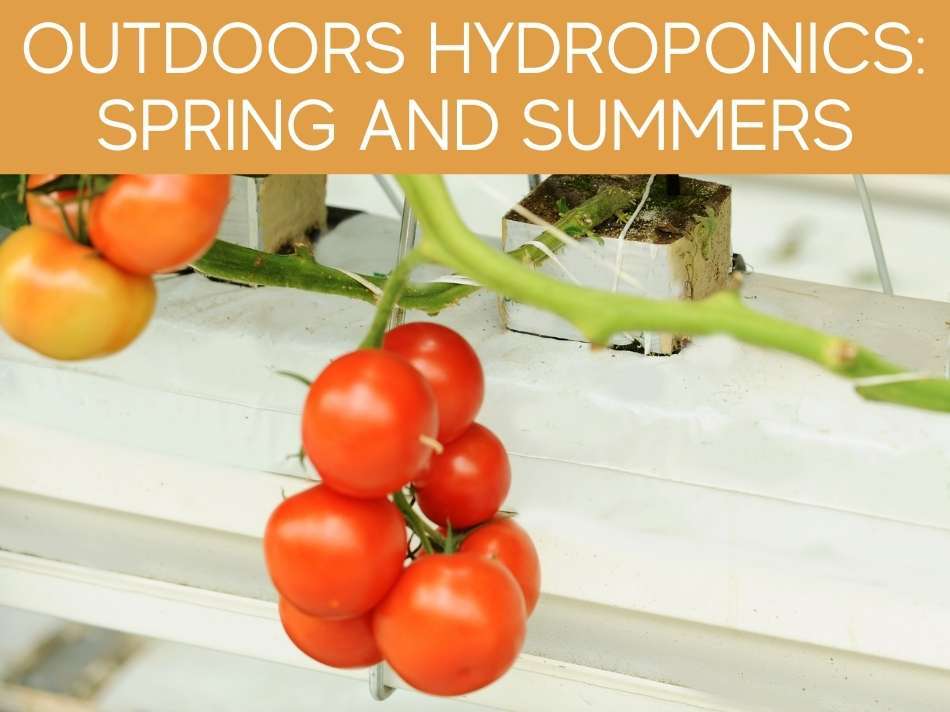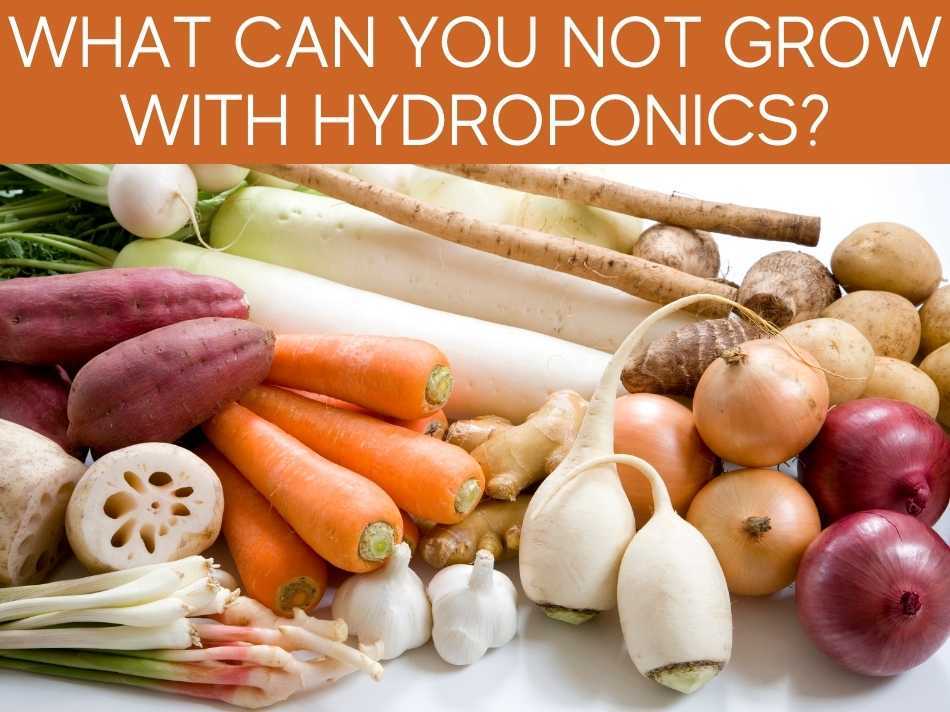Hydroponics is a unique and attractive technique to grow crops without soil, but can you grow anything with hydroponics? Selecting the right plants to grow hydroponically makes all the difference in establishing a successful garden.
While almost anything can grow hydroponically, compact crops like greens do better in a hydroponic system. Common vegetables grown hydroponically include lettuces & greens, tomatoes, strawberries, & peppers. Plants with extensive roots, vining, or tall crops like corn and are best grown in soil.
Though some crops aren’t perfect to grow hydroponically, it really depends on the kind of system and space available to you. It also depends on your experience level. Let’s find out more.
Can you grow any plant hydroponically?

Hydroponics is a technique for soilless gardening that is usually adopted by growers who have little or no gardening space or those who live in cold climates and wish to grow herbs and vegetables through the winters.
By providing the perfect growing conditions indoors, including artificial lighting, nutrients, water, and oxygen, it’s possible to grow almost all plant species all year long.
No matter what the weather is like outdoors, plants will thrive growing in the hydroponics system as long as ideal conditions are maintained.
For a complete run-down of hydroponics, we have a complete article that’ll give you an excellent overview of hydroponics & how to get started with it.
While almost all plants can grow hydroponically, that doesn’t mean that it’s a good idea.
Some crops are just not worth the time and effort they ask for to grow hydroponically.
The entire point of growing hydroponically is to maximize yield in smaller space and grow faster than traditional gardening techniques.
Hydroponics is a space-efficient approach, so you’ll want to pick crops that support this goal.
Consider corn, for example. For a corn crop to thrive, you need to ensure you have enough vertical space for the tall corn stalks. And even with the space you provide, corn will only yield a single ear per plant.
So, although, technically speaking, any plant can grow hydroponically, compact plants with shorter growing seasons are a better option than those that take over the entire space and take a long time to produce fruit.
Can you grow anything with hydroponics?

Hydroponics is not very different from traditional gardening. The basics are the same.
Dirt, or soil, isn’t the limiting factor for plants.
In fact, they can grow without soil.
What plants really need is light, water and nutrients to grow, and a hydroponics system ensures optimal supplies of all these things.
In fact, you might also be interested in our complete article comparing growing in hydroponics vs. soil.
Plants growing hydroponically get their nutrients from the nutrient solution in which the roots are growing. It’s possible to grow plants without soil as long as all the necessities that are absent without the soil are provided.
So, the simple answer is yes, it is possible to grow anything with hydroponics.
Different plants may have slightly different requirements, but they all require the same basic things.
As long as hydroponics covers all the requirements, plants shouldn’t have a problem thriving in them.
However, feasibility is another story.
Commercial growers will weigh the investment against the crop’s worth before deciding if hydroponics is the right growing approach for it.
If you’re a beginner, you would want to start off with the more compact, short-season crops since they’re easier to maintain hydroponically.
It’s easy to be discouraged if you start off with a complex system from the very beginning.
If, however, you’re a seasoned hydroponic grower, willing to explore new options and experiment with different species, there are no limits.
Experienced growers have even succeeded in growing fruit and nut trees hydroponically.
For example, researchers have even designed several systems for growing mango trees hydroponically.
What kind of plants can you grow with hydroponics?

As already mentioned, you can grow almost anything hydroponically.
However, some are easier to handle in a hydroponics system than others.
It also depends on the kind of system you employ.
Different hydroponic systems are better suited for different kinds of plants.
Though there are a number of techniques, they can broadly be categorized into two different types.
Let’s see what plants are better suited for the two types:
Solution systems (nutrient film technique (NFT), aeroponics)

Solution systems are the ones in which plants are grown directly in the nutrient solution.
These types of systems include Aeroponics and Nutrient Film Technique.
Since the plants aren’t anchored to a strong base, don’t try to grow heavier crops in these systems.
They usually work well for shallow-rooted plants that take smaller growing seasons.
Try growing the following vegetables in solution, or liquid culture, systems:
- Lettuce
- Spinach
- Kale
- Herbs
Medium systems (ebb & flow system, and wick system)

Medium systems, including Ebb & Flow and Wick systems, are the ones that use a growing medium such as gravel or sand to anchor the plants.
Since there’s some form of medium at the base to provide support to the plants, you can grow somewhat heavier vegetable crops with these systems.
Plants with deeper roots or those with a heavy top-growth generally work well for such systems.
Try growing the following crops in medium, or aggregate culture, systems:
- Comfrey
- Beets
- Chicory
- Tomatoes
- Cucumbers
- Beans
What vegetables can you grow in hydroponics?

Although almost all vegetables can be grown hydroponically, the crops most commonly grown using this technique include:
- Lettuce
- Tomatoes
- Pepper
- Cucumbers
- Strawberries
- Watercress
- Celery
- Herbs
Of course, with cucumber plants, you’ll need to provide enough vertical space and trellising for the plants to progress vertically.
What food can you grow with hydroponics?

Some food crops are ideal for hydroponic growing, while others won’t do so well.
To have a successful hydroponics garden, the key is to choose the crop variety wisely.
Other than the type of hydroponic system and the kind of space you have, you’ll also need to consider how much light can be provided and the prevalent temperatures.
Indoor hydroponics: year-round

Brassica family crops, herbs and lettuce can be grown hydroponically all year round.
Swiss chard and other leafy greens are also a good option to grow all through the year hydroponically.
However, the system will need to be set up indoors for the winters, and artificial lighting will need to be provided.
Make sure you pick varieties from seed companies that have a reputation for thriving hydroponically.
Outdoors hydroponics: spring and summers

Some crops can be grown hydroponically but will produce best when the system is set up outdoors during the summers.
Although they’ll also grow in artificial lighting and heating, it will be costly.
You can grow tomatoes, strawberries and cucumbers hydroponically outdoors during the spring and summer months.
Pick varieties that are well-suited to container growing.
What can you not grow with hydroponics?

Some crops are better suited to growing in soil. While they’ll survive in a hydroponic system, they won’t generally produce an impressive harvest.
It’s best to avoid the following crops when growing hydroponically:
Root vegetables
Root crops, like potatoes, sweet potatoes, turnips, onion and garlic, are best grown in the traditional style.
The vegetables that develop their edible parts underground won’t do well when surrounded by solution rather than soil.
Heavy crops
While it’s possible to grow heavy crops, like squash and melons, it’s just not economically feasible.
Those who would like to experiment with new ideas may grow these, but it will require plenty of room and a support system to maintain the plants as well as the hydroponic system itself.
If you’re a beginner or are growing commercially, you’d want to avoid fruit and nut trees, shrub-type plants, corn, squash and melons.
